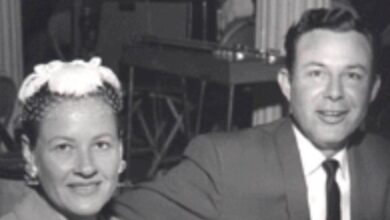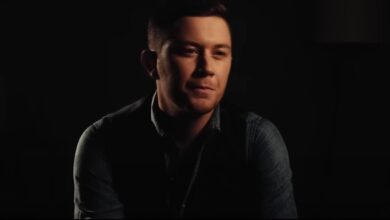Everyone Recognized This Dance In The 1950s, Can You Recall It Today
In February 1958, a dance craze burst into American high school gyms and sock hops, capturing the essence of youthful exuberance and the rise of rock ‘n’ roll culture. This dance was “The Stroll,” a line dance that epitomized the carefree spirit of the era. Emerging from African American communities, “The Stroll” gained widespread popularity thanks to its exposure on television, particularly through Dick Clark’s “American Bandstand,” where teenagers nationwide saw the dance and eagerly adopted it at their local gatherings.
“The Stroll” was not just a dance; it was a cultural sensation that mirrored the social dynamics of the 1950s. The dance involved two lines of participants facing each other, creating a corridor down the middle. Couples took turns walking down this aisle in time with the music, often adding their own personal flair to their movements. The structure of “The Stroll” allowed for both group participation and individual expression, resonating with the youth of the time who were beginning to shape their identities within a rapidly changing social landscape.
Accompanying this dance was the song “The Stroll,” performed by the Canadian vocal group The Diamonds. Known for their smooth harmonies and catchy doo-wop tunes, The Diamonds played a crucial role in popularizing the dance. Their version of “The Stroll” became an anthem for the movement, encapsulating the joy, rebellion, and community spirit of the era. Dave Somerville, the group’s charismatic lead singer, brought the song to life with his rich baritone voice, guiding dancers with his melodic crooning.
The dance’s rapid spread across the nation made it a fixture at dance events, resonating with teenagers eager to be part of the latest craze. “The Stroll” transcended racial and social boundaries at a time when America was deeply segregated. Its simplicity made it accessible, while its cool factor made it irresistible. Teens, dressed in their finest outfits, embraced the dance with a confidence that reflected the optimism of post-war America.
As “The Stroll” gained momentum, it became a symbol of youthful rebellion and fun, uniting teens across the country in a shared experience of dance and music. The phenomenon not only highlighted the influence of television and pop culture in shaping trends but also underscored the role of music and dance in forging connections across different communities. The lasting impact of “The Stroll” on American culture is a testament to its ability to capture the spirit of an era and bring people together in celebration.
?si=CbHsPwTM-VodZAIG





